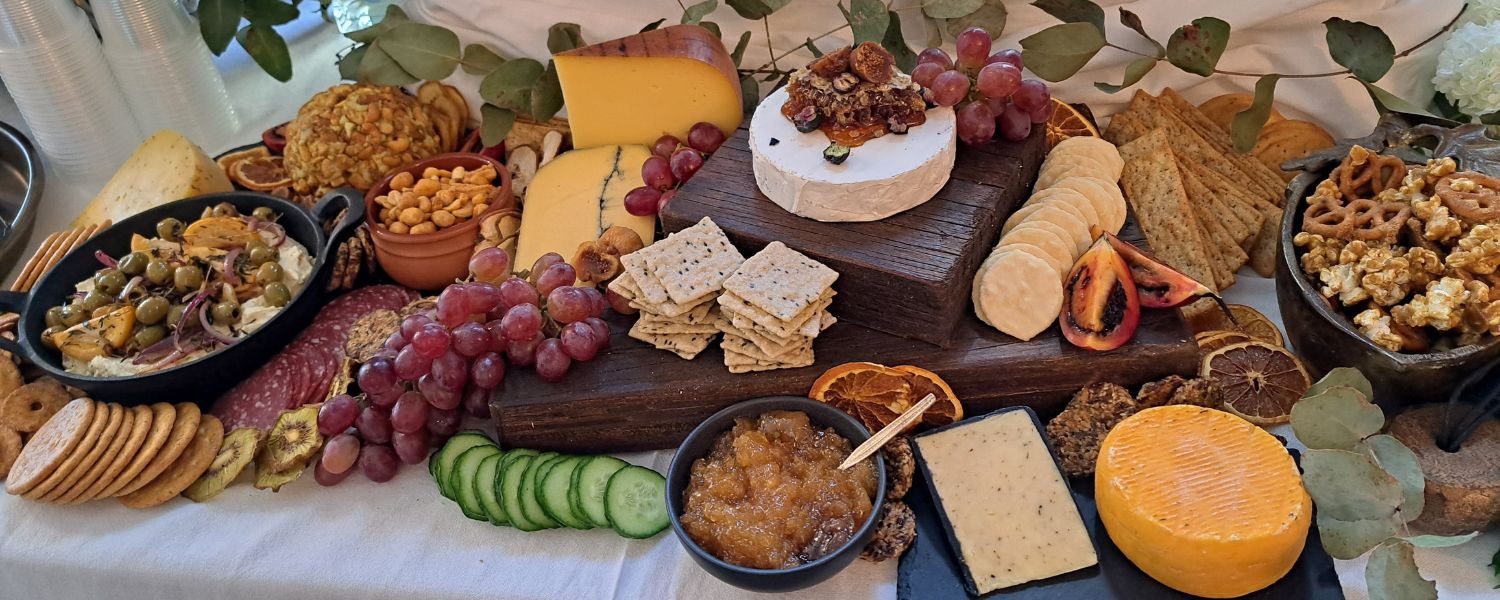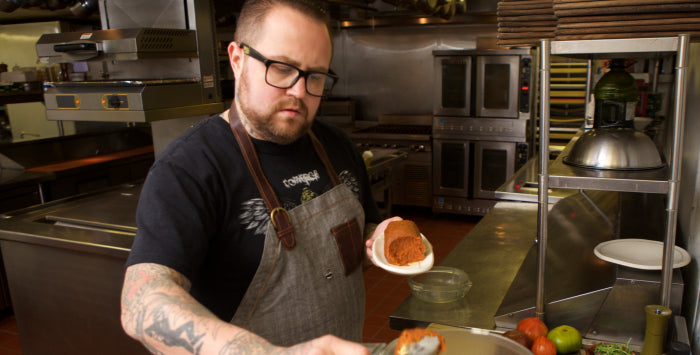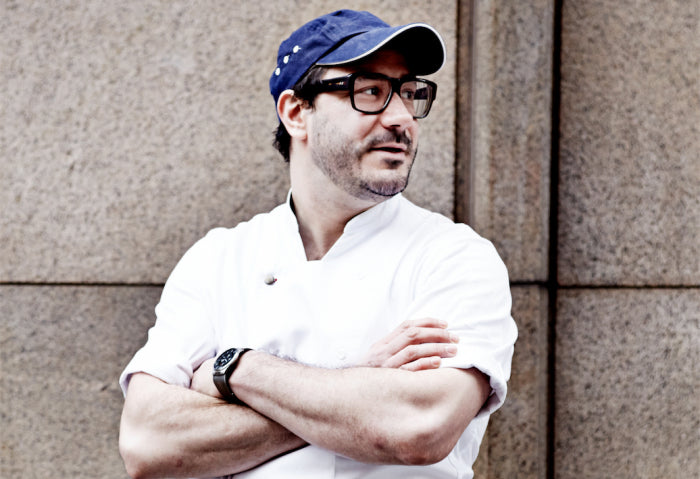Charcuterie and Cheese Boards
By shanikgod

These are often featured in many food blogs, Instagram, or Twitter, and it’s difficult not to notice this ongoing development in the food world. It usually appears intimidating, extensive, and complex, or it may somehow seem daunting to prepare. Still, these tremendously, scrumptious ambrosia are called cheeseboards and are ironically easy and convenient to make.
So what are cheese boards? Cheeseboards are playful assortments of assembled cheeses, Charcuterie or cured meat, sweet and savory pieces that could either be pieces of fruits, vegetables, nuts, along with some dressing, bread, and garnishes over a board that can be either a marble, slate, or wood. The mixed components contrast and complement each other bringing the harmonic idea of gestalt, that the whole is greater than the sum of its parts.
In serving a wine and cheese board, it can be prepared at the end of a meal, which can vary depending on the tradition followed, whereas in the French tradition, the course is enjoyed best with a hearty red wine before the dessert. While in British culture, the cheeseboard is often served and accompanied by sweet wines such as Port after finishing the dessert.
With a playful mix of soft and firm components, along with the creamy and crumbly elements in your Charcuterie and cheese board, you can create the perfect appetizer for any given celebration that can provide your guests with a bountiful and nourishing experience through a broad spectrum of flavor, and texture.
History of Cheeseboards
Contrary to common belief, cheese boards aren’t reasonably new; it comes from several century-old traditions of arranging and preparing cured meats, cheeses, and finger food called Charcuterie. Charcuterie comes from two French words, chair (flesh) and cut (cooked). The name was often used to describe shops during 15th century France that sold products made from pork, including its offals, foie gras, and many ready to eat dishes.
Research into old menus shows dedicated cheese courses were still a rarity in the late 19th century and was more inclined to small dining experiences that developed with most commercial restaurants. Based on the Le Livres des Menus, a selection of several hundreds of famous menus of grand occasions and events, published during 1912. The earliest known record of a French cheese board served as an after-meal may have been on the 1870 menu of Café Voisin in Paris, which concluded with a Fromage Gruyere. While the earliest record in the US was the ‘en l’honneur de M. Escoffier’, a 1910 luncheon menu from the Waldorf Astoria Hotel in New York, was an array of camembert and figs. The earliest cheeseboard itself may have been served on the menu of a 1916 Paris luncheon, which concluded with a course of Roquefort, Port Salut, and Gruyere.
In modern times, cheeseboards appear very affluent in many events, and it is customary to find meat and cheese boards as the ingredients are trouble-free and relatively accessible in most grocers. You may start making your personalized cheese board, remember that it often includes a variety of cured meat like sliced salami, several rolls of prosciutto, some thinly sliced pieces of ham. When selecting the type of cheeses, one must consider the contrasting flavors that you will be adding, as well as picking many different textures and hardness. Like brie and camembert for some soft creamy cheese to gouda, mushy yet firm gruyere, and manchego, and with some resistance to the touch white cheddar and a few high-quality Parmigiano-Reggiano. When considering the dry pieces that compliment and contrast the savory feels of your cheese and meat, you may pick out sliced toasted Baguettes or some lovely sourdough, several servings of salty Ritz crackers, or several salty Pretzel crisps. You can garnish your board with a generous amount of colorful bite-size fruits and berries, like blueberries, raspberries, and some green grapes.
We suggest playing along with the color to add vibrance to your board, and we encourage you to top it with some sliced seasonal fruits such as mangoes, kiwis, pomegranate. To add some earthly, nutty mouthfeel, you can add some fresh, dried, or toasted nuts like pistachios, almonds, peeled sunflower seeds, or pecans. You can also include a few pickle relishes with some young fresh, and sliced vegetables such as carrots, cucumber, or celery. With a few serving of your favorite dip such as marmalade, maple syrup, or if you prefer the savory dips such as mayonnaise, and some balsamic vinegar.
Nowadays, there’s a growing number of people opting for a trend that is friendlier and healthier. It may sound intimidating, but because of our culinary advancement and a plethora of vegan-friendly ingredients, it’s not impossible to have a vegan cheese board that can be a crowd-pleaser. Gone are the days where there are only limited options in finding the perfect pieces for your cheeseboard. As there are numerous lusciously cultured, artisan vegan cheese to choose from which are plant-based, there are also several soy-based meat alternatives to add some protein elements in your cheeseboard. What may even pose a challenge is finding and choosing your course, as it can be simple or as complicated as you want it to be.
Famous people who enjoy cheese and wine
Food Republic has gathered a list of famous people who have incorporated Charcuterie into their art
KRIS MORNINGSTAR’S CHARCUTERIE BOARD IS ONE LUCKY PIECE OF WOOD
So you’re in Los Angeles and craving charcuterie, eh? Well, you lucked out this time. In a health-conscious, Mexican and Korean cuisine-driven city that’s not exactly known for restaurants specializing in the age-old European practice of preserving fatty meats and livers, chef Kris Morningstar is proudly sourcing pig blood.

JAMIE BISSONNETTE PUTS THE “DO” IN ‘NDUJA
James Beard Award–winning Toro and Coppa chef Jamie Bissonnette knows his way around the vast world of preserved meat and fish. He’s a master of charcuterie (coppa is Italian cured pork neck) and an avid collector of canned Spanish seafood — an enviable hobby if you’ve ever loved a smoked mussel or glistening sardine in your life. Equally praise-worthy: his faculty and creativity with ‘nduja, a spicy, spreadable, melt-in-your-mouth fermented sausage.

PHO REAL? CHRIS SHEPHERD CHANNELS HOUSTON’S DIVERSITY ON HIS CHARCUTERIE PLATES
When it came to charcuterie, Chris Shepherd of Underbelly in Houston started out small scale. “I started like every other chef, with just a little wine fridge,” he recalls. “My early education was a lot of reading, but it’s the oldest form of preservation in the world — just add salt and let it sit — so I figured I could pull it off.”

FUSION CHARCUTERIE: FRANCIS DERBY’S CURE FOR THE COMMON COPPA
Francis Derby: executive chef, sausage scholar, pâté deity and all-around MVPP (Most Valuable Pork Person). The longtime NYC restaurant vet (and no-contest winner of 2015’s Cochon 555) helms the protein dream team at the Cannibal Beer & Butcher, a beer lover’s dream of a gastropub in New York’s Flatiron district with an outpost in Hell’s Kitchen.

CAN CHARCUTERIE BE VEGETARIAN? CHARLESTON MAY HAVE THE ANSWER.
How many carrots does it take to make up for the fact that you are not eating capicola? Well, none if you’re vegan, but if you’re a person who would travel a long way for a cannelle of chicken-liver mousse, then the answer is definitely a few…which is how I ended up not sharing a Forage Board at Harold’s Cabin in Charleston, South Carolina.



